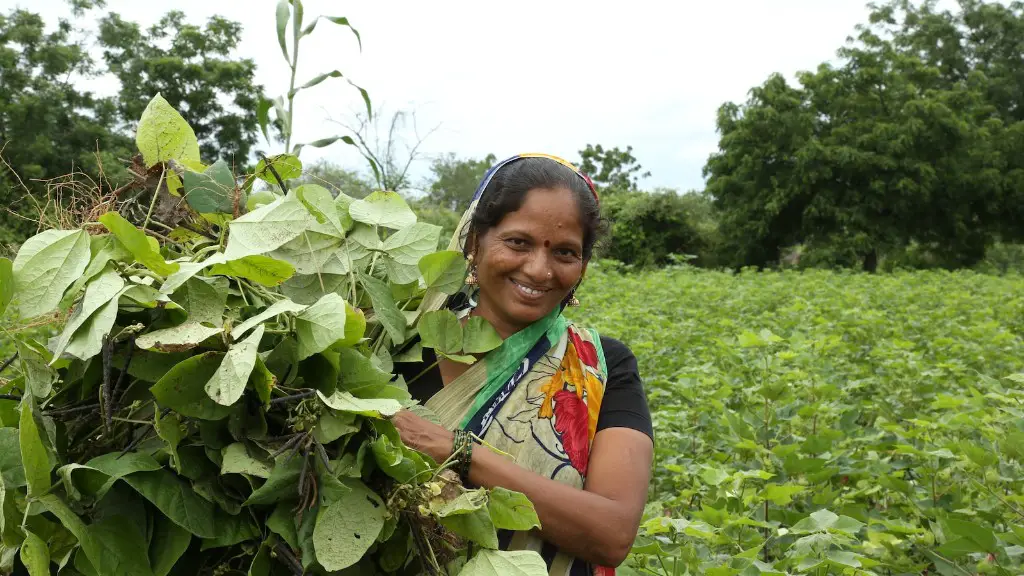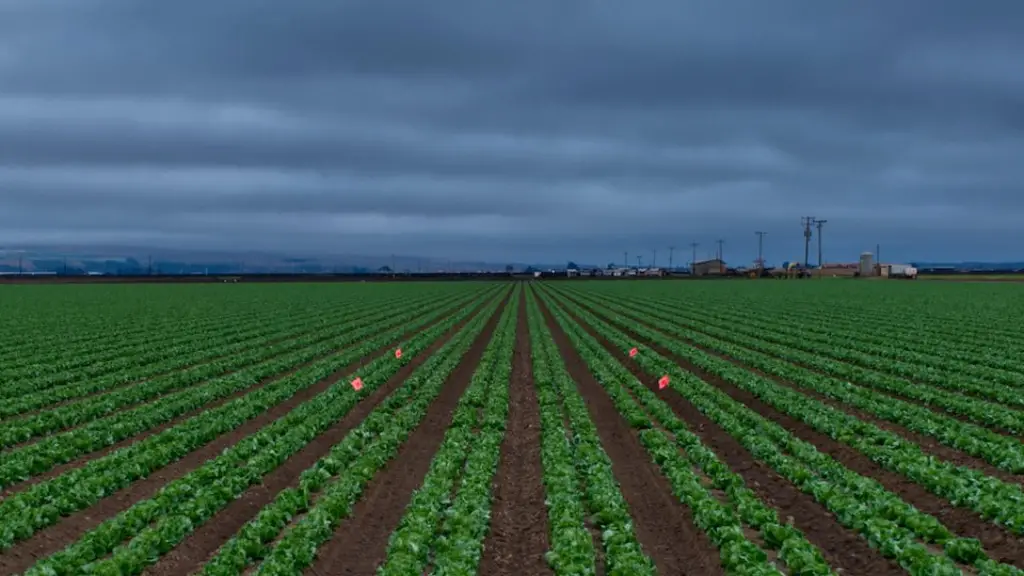Regenerative agriculture is a system of farming principles and practices that seeks to regenerate and revitalize the natural resources used in agriculture. The goal of regenerative agriculture is to create a more sustainable and resilient food system that is better able to withstand the challenges of climate change, while also providing benefits for farmers, consumers, and the environment.
There are many reasons why regenerative agriculture is gaining popularity, including the fact that it can help to mitigate and adapt to climate change, improve water and soil health, and promote biodiversity. In addition, regenerative agriculture has the potential to improve the economic viability of small-scale farmers and create more resilient food systems.
There are many reasons to support regenerative agriculture. This type of agriculture has the potential to reverse climate change, restore ecosystem health, and improve the livelihoods of farmers and communities.
Regenerative agriculture can help to sequester carbon in the soil, which can help to offset greenhouse gas emissions and slow the pace of climate change. In addition, regenerative agriculture can improve soil health, water quality, and biodiversity. Furthermore, regenerative agriculture is often tailored to the specific needs of local communities, which can lead to more resilient and sustainable food systems.
Why should we use regenerative agriculture?
Regenerative agriculture is a type of farming that focuses on rebuilding the soil health and fertility. This is done through practices like cover crops, no-till, and diversified crop rotations. Regenerative agriculture has many benefits for farmers, including reduced costs, improved crop yield and crop quality, and greater resilience to market volatility and extreme climate events. It also opens new green revenue streams for farmers, such as rewarding them for carbon capture and storage in the soil.
Tilling the soil can be a time-consuming and labor-intensive process for farmers. By not tilling the soil, farmers can save between 30 and 40 percent of time, and can decrease the amount of soil erosion in certain terrains. However, the disadvantages of regenerative agriculture are, in many cases, that more unwelcome plants grow on the land, and some farmers compensate for this by increasing their use of herbicides and pesticides.
What makes regenerative agriculture different
Regenerative farming practices are those that focus on rebuilding and maintaining the health of the soil. This is done through practices like mulching, cover crops, and pastures. Diversity is an essential component in building healthy soils that retain excess water and nutrients.
There is a substantial body of research that shows the benefits of regenerative organic farming, including increased carbon sequestration, better soil health, more biodiversity, reduced water pollution, and more resilience to drought, floods, and pest incursions. These benefits are achieved through practices such as using organic amendments, cover crops, and crop rotations to improve soil health; promoting biodiversity through habitat restoration; and using integrated pest management to reduce the need for pesticides.
What is an advantage of a regenerative system?
Regenerative braking is a type of braking system that captures the kinetic energy of a vehicle and converts it into electrical energy. The main advantages of regenerative braking are that it can enhance fuel efficiency or boost the driving range in hybrid and pure electric vehicles, respectively. By improving fuel efficiency/range, it passively helps in lowering the carbon emissions. In addition, regenerative braking can lower the entire braking burden, which can improve the lifespan of braking components.
Regenerative agriculture is a type of agriculture that focuses on rebuilding the soil. This is done through practices such as reduced tillage, using compost and other organic materials, and avoiding fertilizer. Regenerative agriculture has many benefits, one of which is its role in carbon sequestration. Carbon sequestration is the process of storing carbon in the soil, and regenerative agriculture can help to increase the amount of carbon stored in the soil. This is important because it can help to offset the emissions of greenhouse gases that contribute to climate change.
Can regenerative farming help climate change?
Unilever has committed to investing in the transition to regenerative agriculture. This will help to improve soil health, water efficiency, climate resiliency and reduce greenhouse gas emissions.
Regenerative agriculture has the potential to improve both the quantity and quality of food crops. Research shows that building soil organic matter through regenerative practices can improve yields, as well as improve the nutrient and water retention capacity of the soil. These practices can also help to reduce environmental degradation, and improve the resilience of agricultural systems to climate change.
What are the 5 principles of regenerative agriculture
Regenerative farming is a type of agriculture that focuses on rebuilding the soil and restoring the ecosystem. The 5 principles of regenerative farming are:
1. Soil Armor: The first principle is to protect the soil with a layer of organic matter (i.e. mulch, cover crops, and/or compost). This helps to reduce erosion, build soil fertility, and increase water infiltration.
2. Diversity: The second principle is to diversify your plants and animals. This helps to create a more balanced and resilient ecosystem.
3. Continual Live Plant/Root: The third principle is to keep the soil covered with living plants (i.e. cover crops). This helps to build soil organic matter, reduce erosion, and increase water infiltration.
4. Livestock Integration: The fourth principle is to integrate livestock into your farming system. This helps to build soil organic matter, reduce erosion, and increase crop productivity.
5. Minimizing Soil Disturbance: The fifth principle is to minimize soil disturbance. This helps to reduce erosion, build soil organic matter, and increase water infiltration.
Regenerative agriculture is a system of farming practices that aim to restore, rebuild and improve the natural resources in soil, water and ecosystem health.
The four basic principles of regenerative agriculture are:
1. Promote biodiversity
2. Cover crops and crop rotation
3. Eliminate or decrease tillage
4. Reduce the use of artificial fertilizers
These practices work together to build a more sustainable and regenerative agricultural system that is better for the environment and for human health.
What are the four principles of regenerative agriculture?
The 5 principles of regenerative agriculture are essential for maintaining healthy soils. By minimizing soil disturbance, maintaining soil armor, and keeping continual living plant roots, farmers can help regenerate their soils and promote healthy plant growth.
Regenerative farming is a type of agriculture that focuses on rebuilding the topsoil and restoring ecosystems. It promises to reverse the flow of greenhouse gases by putting carbon back into the ground, making agricultural landscapes into carbon sinks. This type of farming has the potential to mitigate climate change, improve the quality of food, and create more resilient ecosystems.
How does regenerative agriculture help farmers
There are many benefits to regenerative agriculture, but one of the most notable is that it can improve crop yields. This is because regenerative farming can improve the health of soil and its ability to retain water, as well as reduce soil erosion. These factors all work together to create conditions that are more favorable for crops, leading to increased yields. In addition to increased crop yields, regenerative agriculture can also help to improve the quality of food, as well as the overall health of the environment.
Regenerative agriculture is a much better approach than organic agriculture. It is based on the observation of the ecological and social function of the farm and community and aims to improve it. Organic agriculture, on the other hand, is more about following a set of rules, mostly about what not to do, such as not using synthetic pesticides.
Is regeneration better than sustainability?
Regenerative programs are more aggressive than sustainable programs in that they aim to restore the environment to its former state. Sustainability by definition means to maintain the current state of the environment. While sustainability is important, regenerative programs are necessary to heal the damage that has already been done.
Regenerative agriculture is a type of farming that focuses on rebuilding and restoring the natural ecosystems that are necessary for the health of the land. This type of agriculture sequesters atmospheric carbon dioxide, which is a greenhouse gas that contributes to climate change. By sequestering this carbon dioxide, regenerative agriculture reverses the industrial agriculture’s contributions to climate change. In addition, regenerative practices such as no till farming and cover cropping are reducing erosion and water pollution, and in turn, producing healthier soils.
Conclusion
Regenerative agriculture is an approach to food production that works with nature to build healthy soils, restore degraded ecosystems and support resilient local communities.
There are many reasons to support regenerative agriculture. This type of agriculture supports the health of the environment, while also providing food and other products that are healthy for people and animals. Additionally, regenerative agriculture can help to mitigate climate change by sequestering carbon in the soil. Finally, regenerative agriculture is often more efficient and productive than traditional farming practices, making it a more sustainable option for the future.





